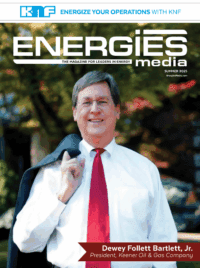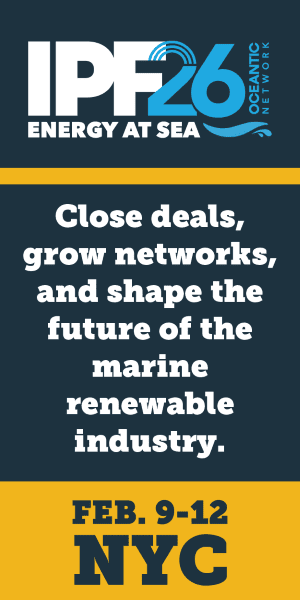A civil engineer explains the role of women in saving millions, improving wildfire readiness, and redefining leadership in the high-stakes world of utility infrastructure.
In March 2025, the American Society of Civil Engineers gave the U.S. energy sector a D+ in its Infrastructure Report Card, citing aging infrastructure, rising demand, and growing climate risks. Meanwhile, data centers and AI technologies are projected to significantly raise electricity consumption, with data centers alone expected to account for 44% of American electricity load growth between 2023 and 2028.
Amid these pressures, managing utility capital programs with intelligence, precision, and foresight has never been more critical. That’s where leaders like Wanqiu Chen step in. As a Senior Associate at Exponent, a global engineering consulting firm, Chen helps utility providers modernize the systems that power everything from hospitals to AI servers. While she may not pour concrete herself, she builds the frameworks and strategies that make complex infrastructure upgrades possible, measurable, and cost-efficient.
Beyond her technical command, Chen is also a leading advocate for equity and innovation in the field. She serves as President of AACE International’s San Francisco Section and sits on the Women in Energy Symposium planning committee at the Western Energy Institute. Her career unites engineering, finance, and leadership, but her most defining quality is a deep commitment to purpose.
Her experience with major projects and field operations offers utilities practical tools to forecast better, manage data more reliably, respond faster to new challenges, and bring the business to growth.
Redesigning Systems, Quietly Leading Change
One of the most frequent breakdowns in utility modernization is financial misalignment—when field activity no longer reflects the budget.
During a $550M electric operations program, Chen faced this challenge directly. The utility relied on a unit-based budget model (e.g., number of poles replaced multiplied by average cost), which overlooked readiness delays, permitting, and midstream changes.
Chen’s solution was to build a real-time forecasting model that categorized costs by type—labor, materials, estimating, overhead—and by stage: committed, invoiced, or pending. This nuanced approach improved forecast accuracy by 20%, preventing budget shortfalls and giving leaders a transparent, up-to-the-minute view of program finances.
“At first, I felt like I was stepping into a storm with no map,” she reflects. “There were conflicting reports, and costs didn’t line up. But I knew—if we could bring structure to the chaos, we could fix it.”
This approach isn’t just applicable to one utility—it’s a model other providers can use to move beyond static unit-cost models toward dynamic, category-based forecasting.
In High-Pressure Environments, Build Calm Into the Process
In an era shaped by climate volatility and rising demand, utility leadership now requires poise, structure, and rapid adaptability.
This philosophy guided Chen through a complex California utility program involving over 100 scope changes. Many changes stemmed from wildfire inspections that uncovered urgent safety risks, requiring immediate field action.
Instead of letting change derail progress, Chen created an escalation tracking system that linked priority changes to construction schedules. Issues were categorized by urgency, assigned to accountable teams, and tracked to resolution, ensuring rapid decision-making.
When field crews faced critical changes mid-project, her framework allowed seamless integration without delaying work. By organizing weekly cross-functional meetings and instituting standardized change protocols, she eliminated bottlenecks between asset management and construction, saving the utility millions and averting fines.
“In uncertain environments, people follow the one who keeps things moving—not the one who makes the most noise,” she says.
Similar escalation frameworks could help utilities accelerate emergency field responses while maintaining program accountability and transparency.
Data That Speaks Infrastructure’s Language
Legacy utility systems often suffer from disjointed, outdated, or redundant data. This creates hidden liabilities that can undermine capital planning.
To address this, Chen led a data integrity initiative, correcting over 10,000 inaccurate or incomplete records tied to project scopes, contracts, and timelines. Once cleansed, she trained wildfire mitigation teams on how to use enterprise tools for forecasting and analytics, ensuring knowledge transfer and sustainable process improvements.
Her approach transformed scattered data into a long-term asset rather than a one-off deliverable.
“People don’t always remember the model,” she explains. “But they remember when it helps them make the right call.”
With data becoming an increasingly critical asset, utilities can benefit from dedicating internal resources to data ownership, quality standards, and frontline analytics training.
With electric vehicles and data centers driving exponential growth in demand, and wildfires threatening core infrastructure, today’s utility programs can no longer afford to be reactive. Chen views her role as contributing to the nation’s resilience, helping utilities adapt quickly enough to meet demand without compromising safety or accountability.
“When your decisions affect lives, you care more about getting it right,” she says. “That’s what keeps me grounded.”
Her capital program management model reminds us that infrastructure modernization doesn’t start with steel or wires—it starts with clarity. And the future of energy will depend on professionals who know how to plan, lead, and adapt before the system breaks.
Nick Vaccaro is a freelance writer and photographer. In addition to providing technical writing services, he is an HSE consultant in the oil and gas industry with twelve years of experience. Vaccaro also contributes to SHALE Oil and Gas Business Magazine, American Oil and Gas Investor, Oil and Gas Investor, Energies Magazine and Louisiana Sportsman Magazine. He has a BA in photojournalism from Loyola University and resides in the New Orleans area. Vaccaro can be reached at 985-966-0957 or nav@vaccarogroupllc.com.







